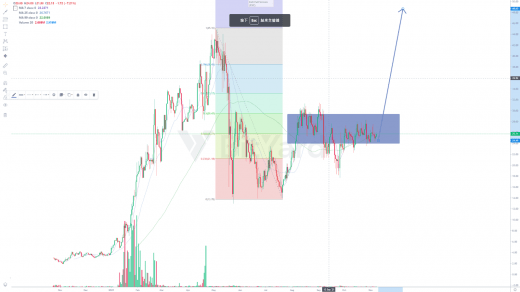Wearable health monitors, fitness trackers, and smartwatches have become increasingly popular. These devices track and monitor our health and wellbeing, such as heart rate, sleep patterns, daily activity levels, etc. With the rise of technology and the growing interest in personal health and fitness, wearable health monitors have become a convenient and accessible tool for individuals to control their health.
The idea of wearable health monitors can be traced back to the early 20th century, with rudimentary devices such as pedometers that track steps and distances. However, it wasn’t until the late 20th century that more advanced technology enabled the development of modern-day fitness trackers and smartwatches. With the advancement of sensors, processors, and wireless connectivity, wearable health monitors have become more accurate and versatile in tracking various health metrics.
Importance of Tracking Your Wellbeing
Tracking your wellbeing is essential for maintaining a healthy lifestyle. With wearable health monitors, you can easily keep track of important metrics such as heart rate, sleep patterns, and daily activity levels. By monitoring these vitals, you can gain valuable insights into your body’s functioning to improve your overall wellbeing.
Moreover, tracking your wellbeing allows you to set realistic goals and track your progress. With the help of wearable health monitors, you can set achievable targets for daily steps, exercise minutes, and sleep duration. This promotes a sense of accomplishment and motivates you to continue your journey toward optimal health. Additionally, monitoring your progress can help identify any changes or improvements in your health over time, providing valuable information for making necessary adjustments to your lifestyle and habits.
Types of Wearable Health Monitors
There are several types of wearable health monitors available on the market. The most common ones include fitness trackers, smartwatches, and medical wearables. Fitness trackers are designed to track daily physical activities like steps taken, distance traveled, and calories burned. They also monitor heart rate and sleep patterns. Some fitness trackers have features such as GPS tracking, workout modes, and water resistance.
On the other hand, smartwatches offer more advanced features beyond health and fitness tracking. They typically have a variety of downloadable apps that can track sleep, heart rate, steps, and workouts. Additionally, they provide smartphone notifications and allow you to make calls or send texts without taking out your phone. Some smartwatches also have built-in GPS, music storage, and contactless payment options.
How Wearable Health Monitors Work
Wearable health monitors collect and analyze data from sensors embedded within the device. These sensors can include accelerometers, gyroscopes, heart rate monitors, and GPS tracking modules. The sensors collect data on your physical movements, heart rate, location, and other relevant metrics. This data is transmitted to a companion app on your phone or tablet.
Once the data is transferred to the app, it is analyzed and presented in an easy-to-understand format. Most apps let you view your daily and weekly activity levels, heart rate trends, and sleep patterns. Some apps also provide personalized insights and tips based on your data to help you reach your health goals. Additionally, many wearable health monitors allow syncing with other health and fitness apps, giving you a comprehensive view of your overall health.
Integrating Wearable Health Monitors into Your Lifestyle
Integrating wearable health monitors into your lifestyle can be straightforward and seamless. One tip is to make wearing the device a part of your daily routine, such as putting it on first thing in the morning or right before exercising. This way, you won’t forget to wear it and can easily track your health throughout the day. Many wearable health monitors also have customizable notifications and reminders to help you stay on track with your goals.
Setting achievable fitness and wellness goals is crucial for making the most out of wearable health monitors. Start by learning about your current health status and setting realistic targets. For example, if you’re not used to exercising, gradually increase your daily step count instead of jumping straight into a high-intensity workout regime. Use the data from your wearable health monitor to track your progress and make necessary adjustments to reach your goals. It’s also essential to celebrate small wins and not be too hard on yourself if you have an off day. Remember, consistency is key to long-term success.
Challenges and Limitations of Wearable Health Monitors
While wearable health monitors offer many benefits, they have challenges and limitations. One of the most significant challenges is accuracy. Wearable health monitors rely on sensors to collect data, and these sensors can sometimes be prone to errors or inaccuracies. Factors such as sensor placement, device calibration, and movement can all affect the accuracy of the data collected. This can lead to inaccurate readings.
Another limitation of wearable health monitors is their reliance on technology and battery life. Like any electronic device, wearable health monitors require a power source. This means they must be charged regularly, which can be inconvenient for some individuals. Additionally, if the device malfunctions or loses battery during use, it can affect the data collection and potentially lead to gaps in your health tracking. Despite these challenges and limitations, wearable health monitors continue to evolve and improve, providing valuable insights into our overall health and helping us make informed decisions about our wellbeing.
Privacy and Security Concerns
As wearable health monitors become more popular, privacy and security concerns have also risen. These devices collect sensitive personal information, such as our daily activities, sleep patterns, and heart rate. Third parties can access this data, leading to concerns about privacy breaches. Additionally, there have been cases of wearable health monitor data used by insurance companies to determine premiums or deny coverage, raising ethical and legal concerns.
To address these concerns, it’s crucial to research the privacy policies of any wearable health monitor before purchasing. Look for devices with robust encryption methods that allow you to control and manage your data. It’s also essential to use secure passwords to prevent hacking or unauthorized access. When used responsibly and with proper precautions, wearable health monitors can be valuable for improving our health without compromising our privacy.
Future of Wearable Health Monitors
As technology advances, the future of wearable health monitors looks promising. One exciting development is integrating artificial intelligence (AI) into these devices. AI can analyze data from wearable health monitors in real time and provide personalized insights and recommendations for improving our health. This can also help with early detection and prevention of certain medical conditions.
Another potential advancement is the use of biosensors in wearable health monitors. These sensors can gather more detailed and accurate information about our bodies, such as blood glucose and hormone levels. This could open up possibilities for personalized medicine and management of chronic conditions. Additionally, using biometric authentication methods, such as fingerprint or facial recognition, could enhance the security and privacy of wearable health monitor data.
In conclusion, wearable health monitors have the potential to revolutionize how we track and manage our health. With the integration of AI, biosensors, and enhanced security measures, these devices will continue to evolve and provide valuable insights into our wellbeing. However, it’s essential to consider their limitations and address privacy concerns as wearable health technology becomes more prevalent daily. As we move towards a more data-driven and technology-dependent society, we must balance utilizing these advancements for our benefit and protecting our privacy and security. Wearable health monitors offer great potential for improving our overall health and well-being, but using them responsibly and cautiously is essential. So, make sure to do your research and choose the right device.




Recent Comments